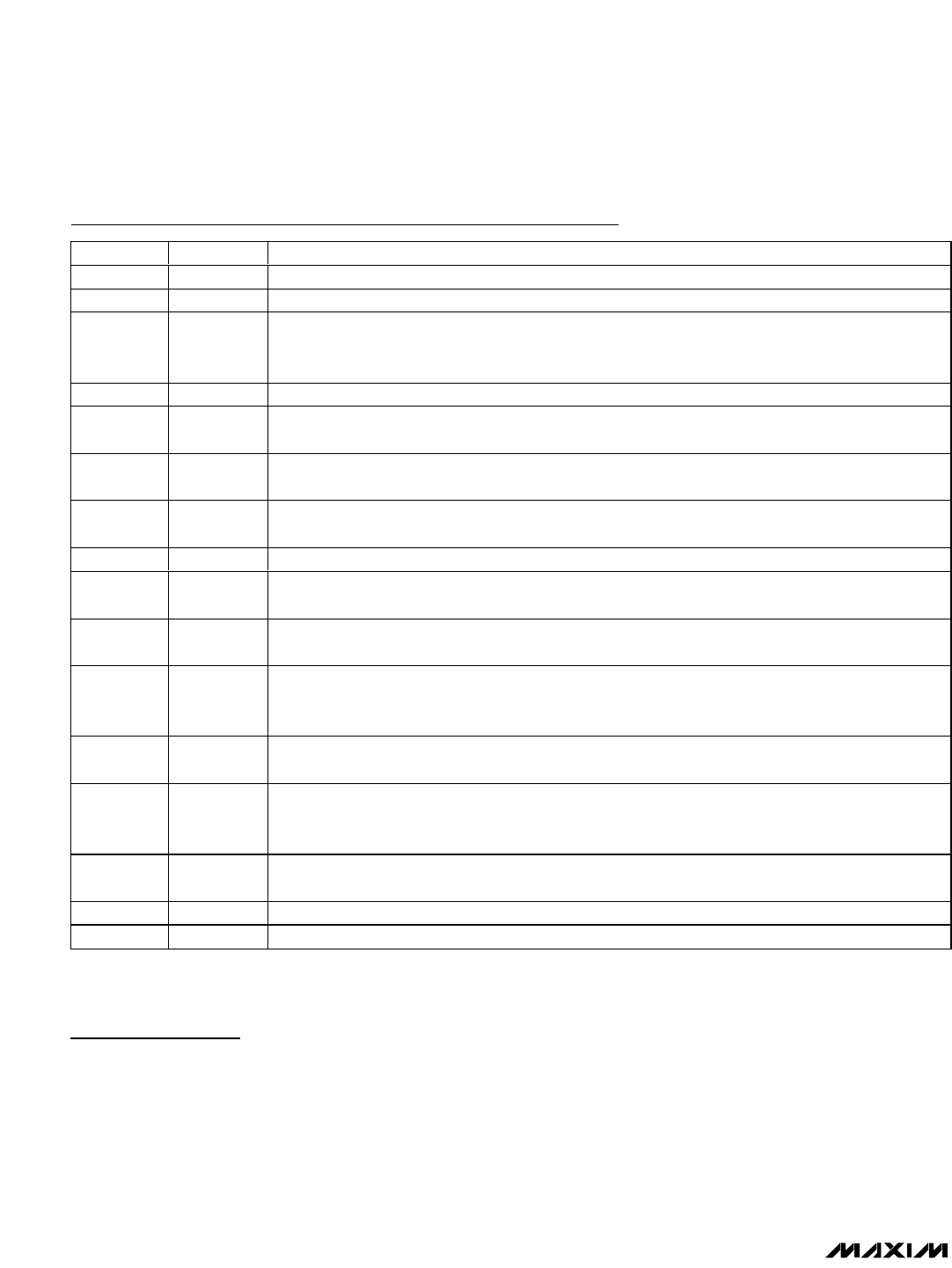Manual

MAX1338
Detailed Description
The MAX1338 simultaneously samples four differential
analog inputs with internal T/H circuits, and sequentially
converts them to a digital code with a 14-bit ADC.
Output data is provided by a 14-bit parallel interface. At
power-up, all channels default to a ±10V input range.
Program different input ranges (±10V, ±5V, ±2.5V, or
±1.25V) using the configuration register. Different input
ranges between ±12V and ±1.0V are realized using an
external reference. All channels offer input protection to
±17V, independent of the selected input range.
The internal clock operates the ADC at 5MHz, or uses
an external conversion clock from 1MHz to 6MHz. EOC
goes low when the result of each conversion is avail-
able, and EOLC goes low when the last conversion
result is available. Standby and shutdown modes,
selectable through logic-control inputs, save power
between conversions. Figure 2 shows a block diagram
of the MAX1338.
14-Bit, 4-Channel, Software-Programmable,
Multiranging, Simultaneous-Sampling ADC
12 ______________________________________________________________________________________
Pin Description (continued)
PIN NAME FUNCTION
41 D12 Data Output Bit 12
42 D13 Data Output Bit 13 (MSB)
43 DRV
DD
Digital I/O Power-Supply Input. DRV
DD
is the power input for the digital I/O buffers and drivers.
Connect a +2.7V to +5.25V power supply to DRV
DD
. Bypass DRV
DD
to DRGND with a 0.1µF
capacitor very close to the device.
44 DRGND Driver Ground. DRGND is the power-supply return for DRV
DD
.
45 EOC
End-of-Conversion Output. EOC goes low to indicate the end of a conversion. EOC returns high after
one clock period.
46 EOLC
End-of-Last-Conversion Output. EOLC goes low to indicate the end of the last conversion. EOLC
returns high when CONVST goes low for the next conversion sequence.
47 RD
Read Input. Forcing RD low initiates a read command of the parallel data bus, D0–D13. D0–D13 are
high impedance while either RD or CS is high.
48 WR Write Input. Forcing WR low initiates a write command for configuring the device through D0–D7.
49 CS
Chip-Select Input. Forcing CS low activates the digital interface. D0–D13 are high impedance while
either CS or RD is high.
50 CONVST
Convert Start Input. CONVST initiates the conversion process. The analog inputs are sampled on the
rising edge of CONVST.
51 CLK
External-Clock Input. CLK accepts a 1MHz to 6MHz external clock signal. For externally clocked
conversions, apply the clock signal to CLK and force INTCLK/EXTCLK low. For internally clocked
conversions, connect CLK to DGND and force INTCLK/EXTCLK high.
52
STANDBY
Standby-Control Input. Forcing STANDBY high partially powers down the device but leaves all the
reference-related circuitry alive. Use STANDBY instead of SHDN when quick wake-up is required.
53 SHDN
Shutdown-Control Input. Force SHDN high to place the device into full shutdown. When in full
shutdown, all circuitry within the device is powered down and all reference capacitors are allowed to
discharge. Allow 1ms for wake-up from full shutdown before starting a conversion.
54 DV
DD
D i g i tal P ow er - S up p l y Inp ut. D V
D D
i s the p ow er i np ut for the d i g i tal ci r cui tr y. C onnect a + 4.75V to + 5.25V
p ow er sup p l y to D V
D D
. Byp ass D V
D D
to D GN D w i th a 0.1µF cap aci tor ver y cl ose to the d evi ce.
55, 56 DGND Digital Ground. Power return for DV
DD
.
—EPExposed Pad. Connect to AGND.










